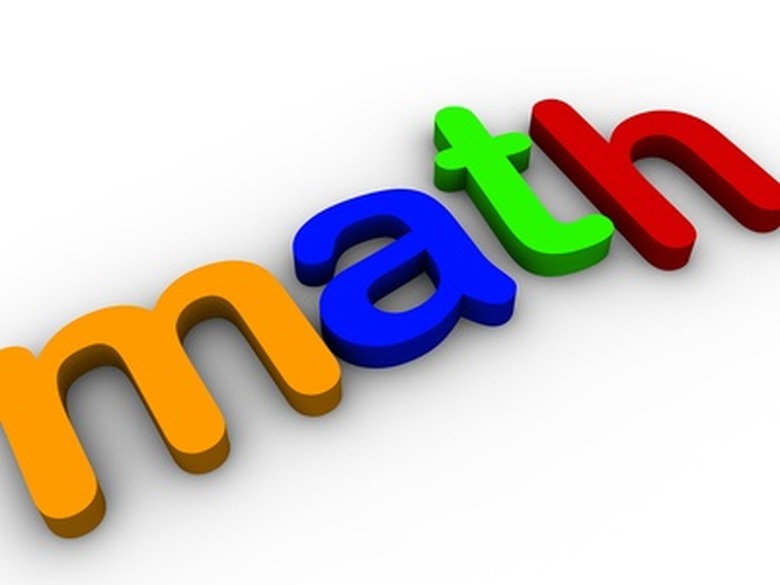Advantages & Disadvantages Of Using Math Tables
In learning math formulas, and in applying math solutions to graphing problems, math tables are often used. Math tables can be a tool or a learning aid. They can be a help or a crutch, depending on how they are used. Their respective advantages and disadvantages are, like most things, dependent on how much a person becomes reliant upon them. Used as tools and used wisely, tables can be a great help. Depending on them, however, can make them a hindrance.
Math Tables
Math Tables
Numerous math reference tables have been constructed for student use regarding formulas. These tables consist of listings of formulas for everything from calculating areas to volumes, to the quadratic equation to slope-intercept equations. These references are available in all fields of math, and are typically found in most math textbooks.
Another type of math table is one constructed for variable values, typically for graphical data, called a T-Chart. This type of math table would have two columns, one for X and one for Y, creating a series of ordered pairs. This table is most often used for solving graphing equations. However, any multiple variable relationship equations can have tables with associated, corresponding values.
Advantages of Using Tables
Advantages of Using Tables
An advantage of using reference tables is that students will have the correct formula for solving their problem. In the "real world," people using formulas in their jobs will have reference tables at hand. While commonly used formulas will become memorized out of repetition, people still have the option of looking up formulas. So learning to use a table is a skill that will be applied in the workforce. Plus, looking up the formula is a real time-saver.
Having a T-Chart of variable values makes graphing the line much easier. The table is easy to use. If seeking the corresponding value of Y to a known X, you simply look up the answer rather than calculate it. With the values graphed, you can easily see the data as a line or curve, showing you trends and even roots.
Disadvantages of Using Tables
Disadvantages of Using Tables
The disadvantage of solely relying on reference tables is that students may not learn how to derive a formula. Understanding how some formulas came to be leads to a greater understanding overall of math. It leads to finding new formulas and builds those skills necessary to adapt and change a formula that doesn't quite fit the model.
Another disadvantage is the loss of memorization skills. Memorization is an important brain function exercise. Allowing the use of tables discourages the act of memorization.
The disadvantages of using relationship tables (T-Charts) for X and Y in equations is that the table only shows a finite number of coordinate pairs. For values that fall between the given solutions, interpolation must be done. For values that go beyond the table's range, extrapolation must be done. These methods are not always accurate. Knowing how to solve the equation for these values is the better solution when the table fails to produce the answer.
Cite This Article
MLA
Donahue, Linda. "Advantages & Disadvantages Of Using Math Tables" sciencing.com, https://www.sciencing.com/advantages-disadvantages-using-math-tables-6030990/. 24 April 2017.
APA
Donahue, Linda. (2017, April 24). Advantages & Disadvantages Of Using Math Tables. sciencing.com. Retrieved from https://www.sciencing.com/advantages-disadvantages-using-math-tables-6030990/
Chicago
Donahue, Linda. Advantages & Disadvantages Of Using Math Tables last modified August 30, 2022. https://www.sciencing.com/advantages-disadvantages-using-math-tables-6030990/
